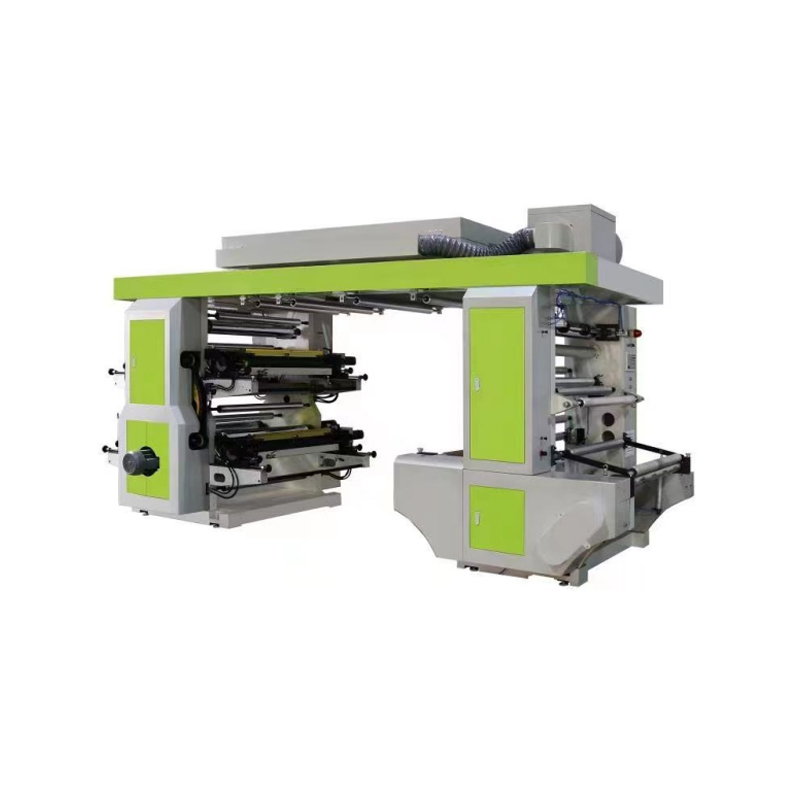Flexographic Printing Presses: Driving Efficiency and Versatility in Modern Packaging Printing
 By Admin
By Admin
In today’s fast-paced packaging industry, the ability to combine speed, flexibility, and print quality is vital for meeting the diverse demands of brands and consumers alike. The Flexographic Printing Press has cemented its place as a cornerstone technology in flexible packaging, labels, and paper products, thanks to its unique balance of performance, cost-effectiveness, and adaptability.
Unlike traditional printing methods, flexography uses flexible photopolymer plates and fast-drying inks to produce vibrant prints on a wide range of substrates, from plastic films and foils to paper and corrugated boards. Recent advances in flexographic technology have further expanded its capabilities, making it a choice for manufacturers looking to boost productivity without compromising on quality.
Fast, High-Volume Production with Consistent Quality
One of the hallmark performance characteristics of modern flexographic presses is their ability to sustain high-speed production runs, often exceeding 400 meters per minute depending on the press configuration and substrate. This speed advantage allows converters to meet tight deadlines and large order volumes without excessive costs.
Flexographic presses achieve this by employing fast-drying solvent, water-based, or UV-curable inks that solidify quickly upon application, enabling rapid web speeds without smudging or offsetting. Moreover, advances in plate technology and ink formulations ensure consistent color density and sharpness across extended runs, reducing waste and downtime caused by print defects.
Substrate Versatility
Flexographic printing presses stand out for their ability to print on a wide variety of materials. From delicate films such as polyethylene (PE) and polypropylene (PP) to paper, cardboard, and metallic foils, these presses handle substrates of differing textures and thicknesses with adjustment.
This flexibility is particularly advantageous in multi-product manufacturing environments where a single machine must switch between food packaging films, labels, and cartons. Modern flexographic presses feature quick-change plate cylinders and impression rollers, making format changeovers rapid and reducing downtime.

Color Reproduction and Registration Accuracy
Despite common perceptions that flexography is a lower-cost alternative to gravure or offset printing, recent innovations have significantly closed the quality gap. With high-resolution plates (up to 400 lpi or more) and precision servo-driven web control systems, flexographic presses now deliver image clarity and fine detail reproduction.
Color registration is tightly controlled via electronic registration systems that monitor and adjust print cylinder alignment in real-time, ensuring multi-color jobs maintain registration throughout long production runs. This capability is essential for complex graphics and brand-specific color accuracy in competitive retail markets.
Environmentally Friendly Operation
Sustainability is a growing priority in printing operations, and flexographic presses are well-positioned to support green initiatives. Water-based and UV-curable inks reduce volatile organic compound (VOC) emissions, while LED curing technology lowers energy consumption compared to traditional dryers.
Furthermore, the printing plates used in flexography are reusable and require less raw material than other printing plates, resulting in less waste generation. Many presses incorporate ink recirculation systems and closed-loop solvent recovery, environmental impact and operational costs.
User-Friendly Automation and Smart Features
Modern flexographic presses are equipped with advanced automation technologies to enhance operator efficiency and print consistency. Touchscreen Human-Machine Interfaces (HMIs) provide real-time control over printing parameters such as ink viscosity, nip pressure, and web tension.
Automated job recall functions enable rapid setup for repeat orders, while integrated quality control cameras continuously inspect print quality and alert operators to defects such as streaks, color shifts, or registration errors. Some presses offer remote monitoring and diagnostics, aligning with Industry 4.0 trends and helping reduce unplanned downtime.
Cost-Effective Maintenance and Plate Preparation
Flexographic presses benefit from relatively low maintenance costs compared to other printing technologies. Photopolymer plates are durable and can be prepared quickly using digital platemaking systems, which reduce the time and cost associated with traditional engraving.




